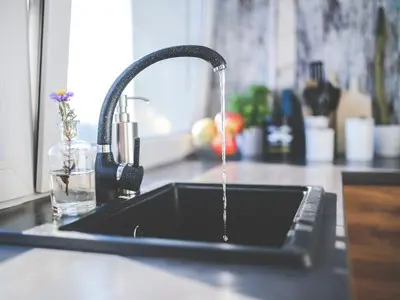Drinking Water Testing and Analysis
Safe Drinking Water Is Critical to Living a Safe and Healthy Life Wherever You May Be. Our Testing Services Deliver Clear Results for Quality Assurance


What’s in the water we drink?
Have you ever stopped to think about it? Is it safe for consumption? In many cases, it’s difficult to tell actual water “Quality” by just looking at it or even by drinking it. If you are a homeowner or are planning on purchasing a home, you may know that water testing is a part of the real estate transaction–an important one that could make or break the sale or purchase. Whether you’re buying or selling a property or need water testing for another project, Mold Inspection Sciences’ testing services will help measure the suitability of the drinking water system your property uses.
What We Test For in Drinking Water
Bacteria

This screening will look for two types of bacteria, coliform and E. coli. Coliforms are bacteria that are present in the digestive tracts of all warm-blooded animals, including humans. While this bacterium itself is not likely to cause illness, its presence can indicate that disease-causing organisms (pathogens) could be in the water system. E. coli is one of the major species in the fecal coliform group – one of the five groups of bacteria that make up the total coliforms. While there are strains that can cause illness, most E. coli bacteria are harmless and are not typically found growing and reproducing in the environment. However, E. coli, when identified, indicates recent fecal contamination and a high risk that pathogens are present.
Nitrates and Nitrites

Nitrate-nitrogen is a naturally occurring compound found in high levels in relation to human waste, animal waste, and commercial applications like chemical fertilizers. Well water systems are at risk for nitrate contamination due to improper well construction, well location, overuse of fertilizers in the area, and/or improper disposal of waste in the area. Ingesting elevated nitrate levels can cause Blue Baby Syndrome. Testing is highly recommended for households with infants, pregnant women, nursing mothers, and/or older adults on well water in rural areas.
Lead, Iron, and Manganese

As a heavy metal, Lead has been used in construction for hundreds of years due to many of its inherent properties. It can be found in lead pipes, plumbing fixtures, welding solder, or pipe fittings within plumbing systems. When people are exposed to lead, and a buildup occurs in the body, they are at risk for lead poisoning. On the other hand, iron and manganese are considered non-hazardous elements that are commonly found in water but can be associated with health concerns. They can affect the color and flavor of water, stain laundry, and can build up within a water system causing damage. A common sign of high levels within a system can be “slime” buildups in toilet tanks.
pH and Turbidity

Turbidity measures the clarity of water or the cloudiness of fluid due to suspended solids within the liquid. Turbidity in drinking water is an issue because contaminants such as viruses and bacteria can become attached to suspended solids putting people at risk for developing gastrointestinal diseases. Testing for pH: Because metals dissolve easily within acidic water, water with a low pH, more than likely, dissolved any present metals that may have leached from a plumbing system. However, water with a high pH contains a lot of calcium and minerals that can cause scaly deposits on cookware and produce a bitter taste in coffee.
Have a question about drinking water quality testing?

Want to learn more about our water testing and analysis or other services? Call us today to speak with one of our specialists. You can get in touch with our team by calling +1.800.619.6653. We look forward to speaking with you!
Mold Inspection Sciences Drinking Water Testing and Analysis Services
Special considerations must be made when scheduling the collection of a Drinking Water Analysis Test with regard to the static state of the system and the amount of time the water sample collected has been in contact with the system. Get in touch with our specialists to ensure the sample collection appointment is set for the optimal time. They will also relay important instructions relating to when and how to perform a system flush. All of this will help to make certain the test results are accurate and provide you with the assurance of knowing your water system is safe.
Included in Our Analysis
This screening will look for coliform, E. coli, nitrate, nitrite, iron, and lead. At Mold Inspection Sciences, we test for all the above contaminates as well as manganese. We also evaluate turbidity and pH as part of our standard test panel. A number of samples will be taken from the point of use and sent to our laboratory for analysis. The laboratory report details each analyte included in the panel along with an indicator for detection and concentration status relative to EPA limits. Any analyte that exceeds EPA limits is clearly identified as are results where there was no presence detected.
Where the presence of bacteria is indicated, it is recommended to disinfect the water source and retest. To help mitigate any future issues, a permanent treatment system, such as a UV disinfection system, may be an appropriate option.
Drinking Water Testing for Real Estate Transactions
When you buy or sell a home, your first thought probably isn’t about drinking water quality, but did you know water quality can be a crucial part of a real estate transaction? Check out our blog post on this topic for more details about what to consider when buying or selling.

